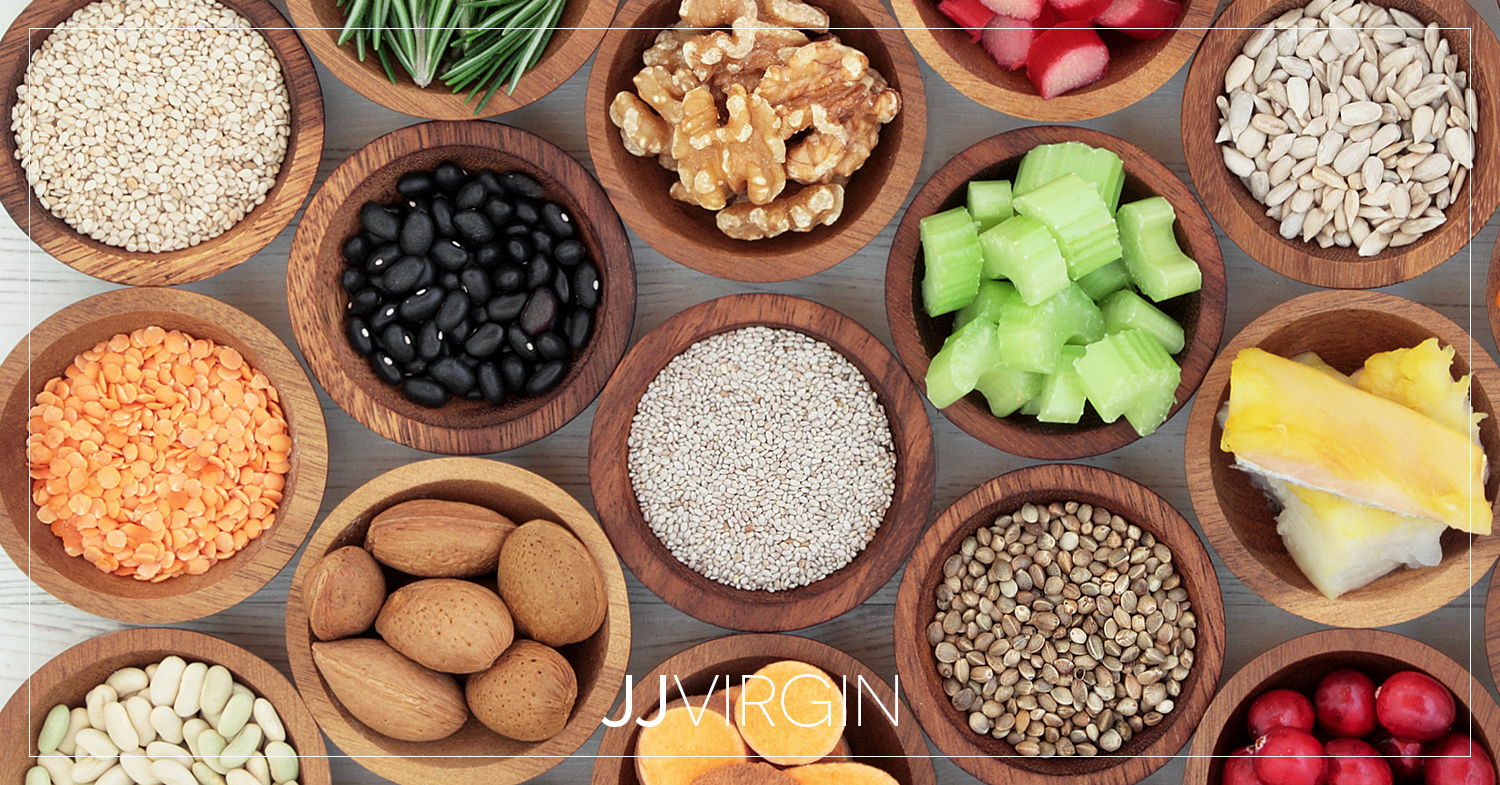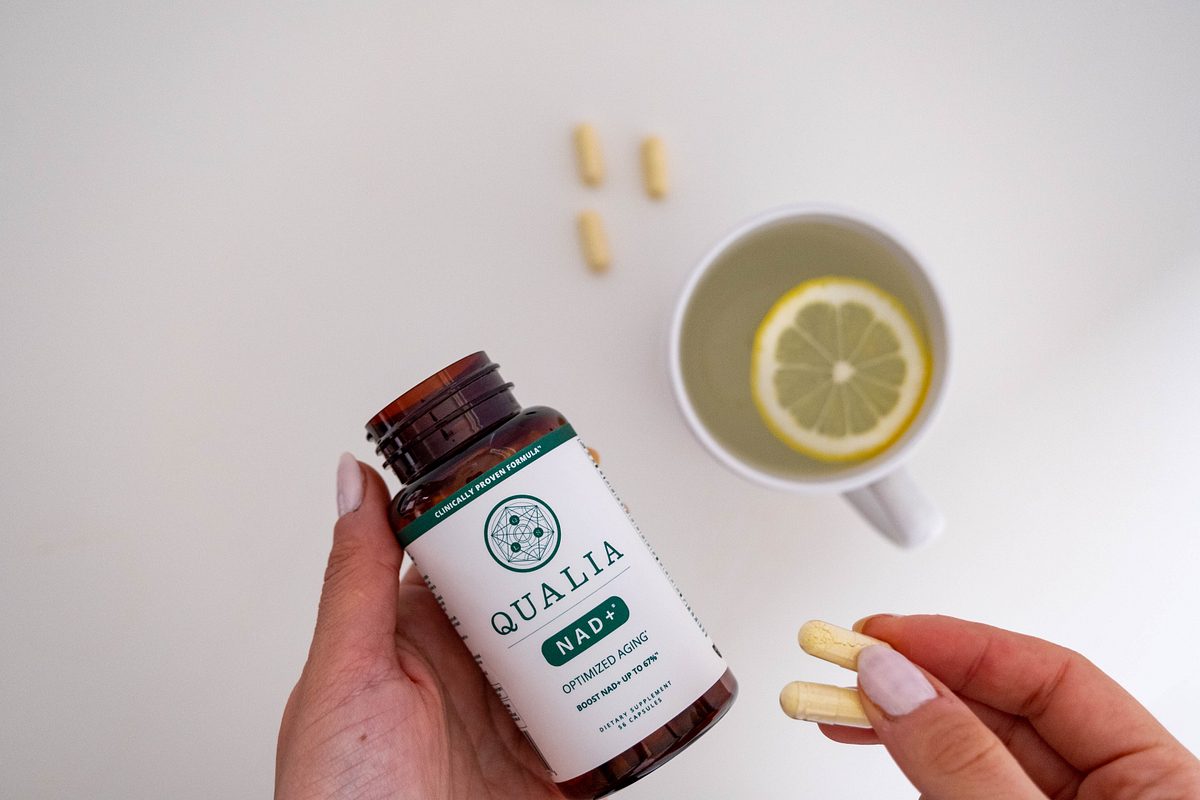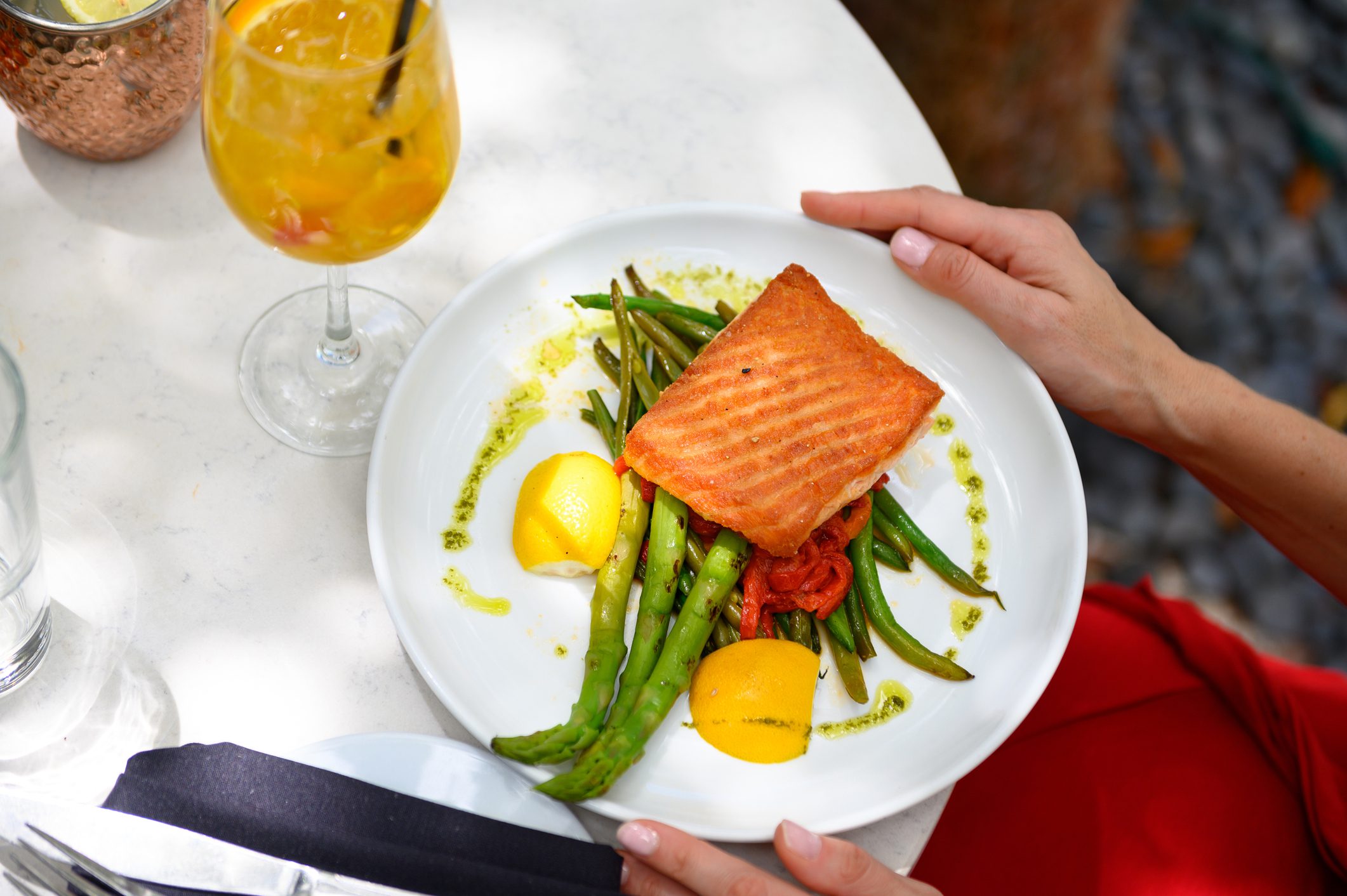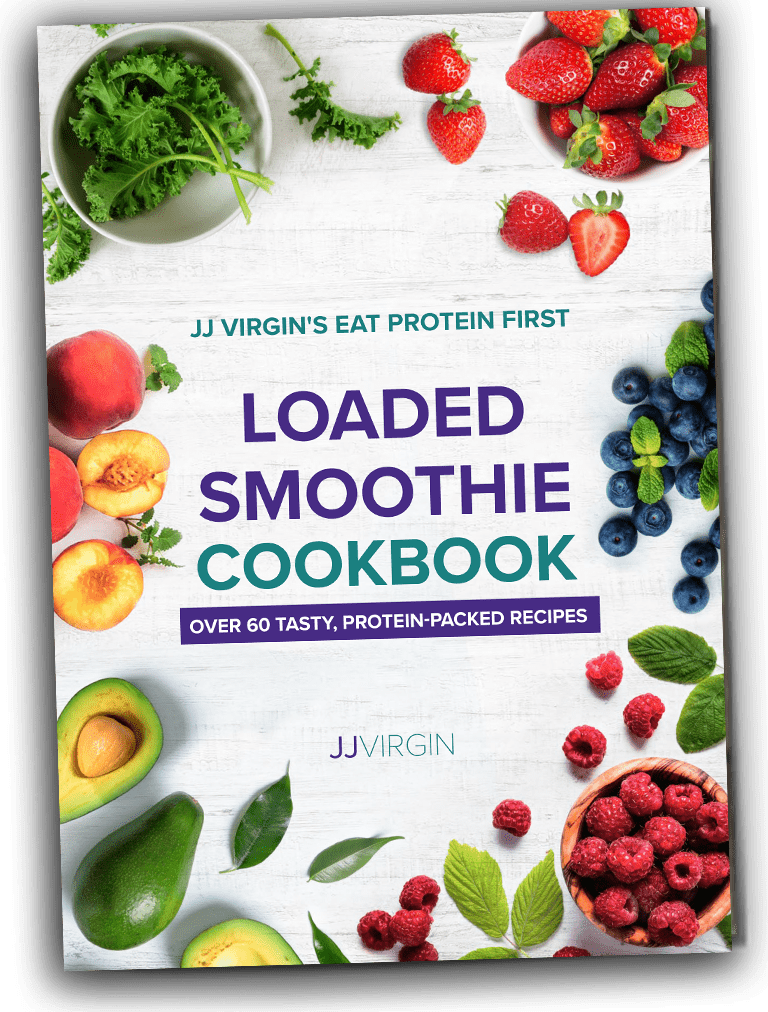Fiber is vitally important for your health and daily comfort.
You’d never know that by looking at U.S. dietary habits, though!
Fiber consumption is at an all-time low, with less than 3% of Americans getting their recommended daily intake.1
Studies show that the average fiber intake for women is only 12-13 grams per day, and men aren’t topping the charts, either! The daily fiber consumption for men is a mere 16-17 grams.2
That’s a long way from the ideal amount of 50 grams per day…
And getting enough fiber is serious business: although fiber is well-known for keeping your digestive system functioning smoothly, it actually protects your health in many other ways.
From helping you feel full and burn fat to balancing your blood sugar levels and optimizing your gut microbiome, fiber has a whole host of health benefits.
How Fiber Helps
Check out all the details about how this amazing, multitasking macronutrient helps…
Maintain healthy cholesterol levels and boost heart health
Studies have shown that a diet high in fiber can help reduce your risk of heart disease and improve your cardiovascular health.2
That’s because fiber is not only crucial to keeping your cholesterol at healthy levels, it also helps lower your blood pressure and decrease markers of inflammation in the body.3
In fact, studies report a 9% reduced risk of heart disease with every additional 7 grams of fiber consumed a day.4
That means you can protect your heart just by adding a 1/2 cup of lentils or a couple tablespoons of chia seeds to your daily menu!
Manage blood sugar levels and protect against type 2 diabetes
By slowing the rate of digestion, fiber prevents inflammation-inducing spikes in your blood sugar levels.
And when your blood sugar is balanced, you’re less likely to fall prey to hunger and cravings that can lead to weight gain.
What’s more, research has proven that a high-fiber diet can help prevent type 2 diabetes and improve blood glucose levels in diabetic patients.5
Those are all powerful reasons to incorporate more fiber into your healthy eating routine!
Reduce your appetite and spark weight loss
If you’re not adding plenty of fiber-rich foods to your plate, you probably suffer from snack attacks shortly after eating.
Luckily, there’s an easy solution: bump up your fiber intake!
Fiber is an amazing ally when it comes to helping you feel full so you can go longer between meals.
As a matter of fact, recent studies prove that just increasing your fiber intake alone is enough to help you shed extra pounds.6
There’s no doubt that fiber is your secret weapon for fast, lasting weight loss!
Strengthen your gut microbiome
The microbiome is the community of bacteria that reside in your gut, and it’s key for supporting your immune system, eliminating toxins, and constructing the building blocks of the chemicals that determine your mood.7
Your gut microbiome also plays a major role in maintaining your weight.
If you have an overgrowth of bad bacteria in your gut, you can actually extract more calories from the food you eat and store them as fat.8
Fiber to the rescue! It turns out that prebiotic fiber feeds the good guys in your gut and keeps your gut microbiome thriving.
How to Get It
Fortunately, meeting your fiber quota is simple when you incorporate more of these 15 delicious foods into your plan:
- Split Peas (16.3 grams per cup). Your mother was right when she told you to eat your peas! Split peas are an amazing source of fiber and a great source of protein to boot.
- Lentils (15.6 grams per cup). Lentils are loaded with fiber and an ideal protein source for vegetarians and carnivores alike. This savory Lentil Bacon Soup is sure to hit the spot…
- Artichokes (10.3 grams per cup). Artichokes are my favorite appetizer when dining out. Not only are they a great source of fiber, they also promote healthy liver function and boost levels of glutathione — the master detoxifier of every cell in your body. For a tasty way to detox, whip up a batch of Roasted Artichoke Dip.
- Raspberries (8 grams per cup). What’s not to love about raspberries? They’re jam-packed with fiber, as well as antioxidants, which help protect your cells from aging and disease. They’re also a yummy addition to your protein shake or the perfect low-sugar impact treat in Frozen Chocolate Raspberry Ripple.
- Oatmeal (4 grams per cup) Hearty and filling, oatmeal provides a hefty dose of fiber. Combined with the power of clean, lean protein and healthy fats in Oatmeal Cookie Overnight Oats, you’ll have all the nutrition you need to start your day out right.
- Blackberries (7.6 grams per cup). Blackberries are great for you in many ways! They’re high in fiber, plus they’re full of vitamins, minerals, and antioxidants. That means they can slow cellular aging and prevent a variety of diseases.
- Avocados (6.7 grams per cup). Avocados are the ultimate superfood with plenty of fiber, vitamins, and inflammation-fighting omega-3 fatty acids. And they taste amazing, too! Try them in this scrumptious Chocolate Avocado Mousse with Cacao Nibs.
- Black Beans (15 grams per cup). Black beans are one of my favorite go-to options. They’re packed with fiber and healthy plant protein. I know you’ll love them in White Bean Cajun Chicken with Black Beans and “Rice.”
- Broccoli (5.1 grams per cup). Broccoli is a nutritional powerhouse with fiber, vitamins and minerals, plus plant compounds that have detoxification and disease-fighting benefits. This savory Paleo Steamed Broccoli with Garlic Oil Drizzle is so easy to prepare and makes the perfect weeknight side dish.
- Chia Seeds (5.5 grams per tablespoon). Chia seeds contain plenty of filling fiber and omega-3s that can help fight inflammation and disease. They’re also extremely versatile and happily take on the flavors of any recipe, whether it be Vegetarian White Chili or Berry Chia Seed Pudding.
- Cooked Quinoa (5.2 grams per cup). Quinoa is a nutritional rockstar! It’s packed with fiber and minerals, plus it’s a complete protein, meaning it has all 9 essential amino acids. You can have it for breakfast in Hot Quinoa Cereal with Warm Berry Compote or enjoy it as a yummy meatless main in Asian Confetti Quinoa Salad with Almonds.
- Brussels Sprouts (4.1 grams per cup). A member of the cabbage family, Brussels Sprouts pack a powerful nutritional punch! In addition to fiber, Brussels Sprouts contain vitamins and omega-3 fatty acids. Omega-3s are the incredible fatty acids that have been proven to curb inflammation, improve brain health, and help burn fat and build muscle.9,10
- Apples (2.6 grams per cup). Apples are a fantastic source of prebiotics and pectin, a natural anti-inflammatory that’s excellent for healing and soothing your gut. Enjoy gut-healing apples in Baked Apples with Cinnamon Oatmeal Crumble. (As a bonus, this healthy dessert makes your whole house smell amazing, too.)
- Lima Beans (13.2 grams per cup). Lima beans don’t get the respect they deserve! These amazing little guys are full of fiber and have a surprisingly creamy texture. They make the perfect addition to any stew or soup.
- Cauliflower (2.1 grams per cup). Cauliflower is a humble superstar, with tons of fiber, vitamins, minerals, and health-boosting plant compounds. I’ve recently fallen in love with riced cauliflower — it makes a tasty replacement for rice without any of the sugar! Try it in Crockpot Chicken & Cauliflower Rice Stew.
Ready to reap the rewards of fiber?
The best way to get fiber is definitely by eating a diet rich in a variety of high-fiber foods.
However, if you’re struggling to meet your daily quota, you can always add Extra Fiber into your morning shake. *
Break your fast every morning with a fast, filling loaded smoothie. Need some yummy ideas? I’ve got over 50 recipes in this guide. It’s FREE… and guaranteed to be a game changer for fat loss and overall health. Claim yours here.
Take It Slowly…
One final note: it’s important to increase your fiber intake gradually to avoid stomach upset.
You can do that by raising the amount of fiber you eat daily in 5-gram increments.
Be sure to wait until you’re not having any digestive symptoms before increasing the dose again. Slowly keep stepping up the amount of fiber you’re eating until you reach the goal of 50 grams per day.
And be sure to increase your water intake, too! (How much water should you be getting daily? Find out in this blog.)
Meeting your fiber quota from food alone can be a challenge! That’s why we created Extra Fiber. Each serving packs 12 types of fiber, including a prebiotic that supports the growth of friendly bacteria.* This is the Rolls Royce of fiber products… and you can only get it here.
The views in this blog by JJ Virgin should never be used as a substitute for professional medical advice. Please work with a healthcare practitioner concerning any medical problem or concern. The information here is not intended to diagnose, treat, or prevent any disease or condition. Statements contained here have not been evaluated by the Food and Drug Administration.
*These statements have not been evaluated by the Food and Drug Administration. This product is not intended to diagnose, treat, cure, or prevent any disease.
References
1 https://www.ncbi.nlm.nih.gov/pubmed/22649260
2https://www.cnpp.usda.gov/sites/default/files/nutrition_insights_uploads/Insight36.pd
3 https://www.ncbi.nlm.nih.gov/pubmed/18953766
4 https://www.bmj.com/content/347/bmj.f6879
5 https://www.ncbi.nlm.nih.gov/pubmed/29628808
6 https://www.ncbi.nlm.nih.gov/pubmed/11396693
7 https://www.medicalnewstoday.com/kc/serotonin-facts-232248
8 https://www.nature.com/articles/nature05414
9 https://www.ncbi.nlm.nih.gov/pmc/articles/PMC3499967/
10 https://link.springer.com/article/10.1007/s11883-004-0087-5





